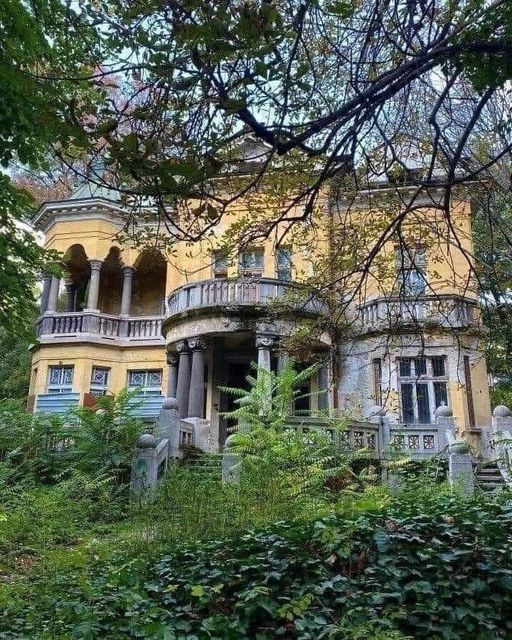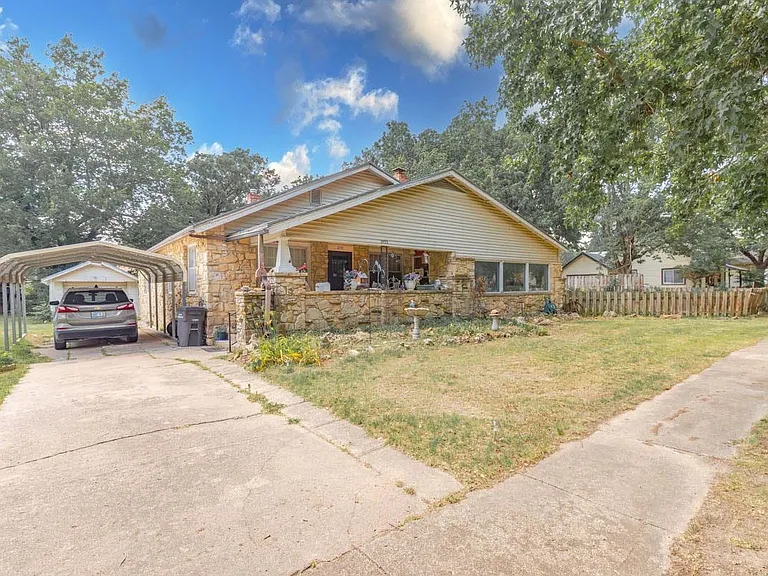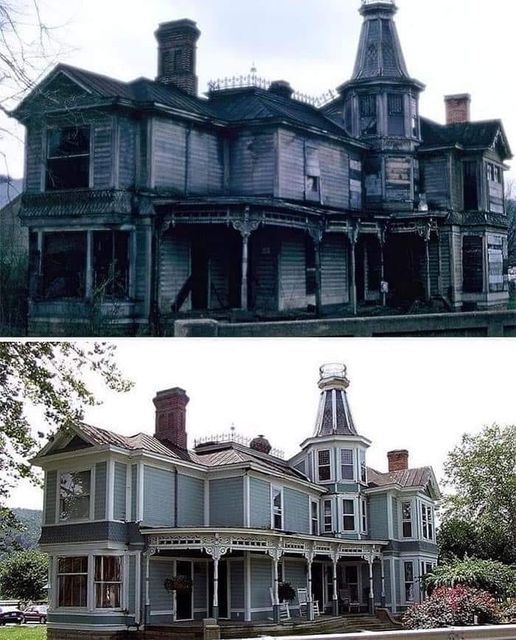The Abandoned Monsour Medical Center: Everything Left Behind – See Inside!
Once situated in the city of Jeannette, Pennsylvania, the Monsour Medical Center’s story unfolds, a complex narrative of ambition, growth, and the inevitable closure of what had become a towering 10-story biohazard. Founded in what was originally “Senator Brown’s Mansion,” what began as a roadside clinic under the stewardship of the Monsour brothers would evolve into a cornerstone of community healthcare, its history intertwined with tales of expansion, financial struggle, and the relentless pursuit of medical excellence. Unfortunately, that excellence would fade with the passing of time.
The Birth of a Vision
In the year of 1952, Howard, Roy, Robert, and William Monsour embarked on a noble endeavor. Their vision was simple yet profound: to transform “Senator Brown’s Mansion,” a place of historical significance, into a sanctuary of healing. This six-bed clinic was not just a medical facility; it was a testament to the Monsour family’s commitment to the health and well-being of Jeannette’s residents. By 1958, the clinic’s expansion to a 100-bed hospital marked the first milestone in their journey, signifying growth that was fueled by community trust and a shared vision of healthcare accessibility.

A Period of Growth and Aspiration
The subsequent decades were marked by ambitious expansions that sought to adapt to the growing healthcare needs of the community. The addition of a coronary care unit in 1968 and the construction of a medical tower in the early 1970s were emblematic of Monsour Medical Center’s aspirations. These expansions were not just about adding beds or facilities; they were about enhancing the quality of care and making advanced medical services accessible to all.
The establishment of the Monsour Academy of Medicine in 1971 further illustrated the hospital’s commitment to medical education and excellence. By inviting distinguished speakers and fostering a culture of continuous learning, the academy aimed to bridge the gap between local healthcare services and the evolving global standards of medical practice.

The Descent into Financial Turbulence
As the Monsour Medical Center strode forward on its path of expansion and service, dark clouds of financial instability began to gather on the horizon. The early signs of distress, seemingly manageable at first, heralded the onset of a turbulent era that would challenge the very foundation of the institution.
The Onset of Financial Struggles
The year 1980 marked a pivotal moment in the history of Monsour Medical Center, as it filed for bankruptcy protection for the first time. This was not merely a financial hiccup but a stark revelation of the underlying economic vulnerabilities that plagued the hospital. Despite emerging from bankruptcy in 1988, the relief was temporary, a brief respite in a continuing saga of financial woes. The subsequent bankruptcy filings, in 1991 and again in 2001, underscored a pattern of fiscal instability that seemed to shadow the hospital’s every step.
These financial struggles were further compounded by ambitious but ultimately burdensome projects, such as the construction of a medical arts building. The 1989 reorganization plan, which included a $19 million bond issue to resolve outstanding debts, was one example of the hospital’s desperate attempts to navigate through its economic downfall. Yet, the cycle of debt and restructuring continued, with each effort at recovery seeming to only deepen the financial pit it continued to sink deeper and deeper into.

A Tangled Web of Economic Challenges
The financial collapse of Monsour Medical Center during these years was a complex story, woven with threads of ambition, mismanagement, and external economic pressures. The decision by Howard Monsour to purchase the circa 1989 bond payments for a discounted price of $3 million in 1992, though well-intentioned, failed to arrest the hospital’s financial decline. The subsequent transfer of the hospital from a court-appointed trustee to a new board of directors in 1993 was a move aimed at revitalization, yet it too could not steer the institution back to good financial health.
The hospital’s repeated forays into bankruptcy protection, culminating in the fourth and final filing, painted a grim picture of an institution battling not just for its survival but for its very soul. The efforts to introduce new programs, such as the cardiology and a geriatric medicine program announced in 2005, were valiant attempts to pivot and find new revenue streams. However, these initiatives were akin to too little, too late, as the financial stability of the hospital had deteriorated beyond repair.


Navigating the Regulatory Labyrinth
As Monsour Medical Center grappled with its financial predicaments, another formidable challenge emerged, complicating its journey: stringent regulatory compliance and licensing hurdles. This period underscored the hospital’s struggle not only with its ledger books but also with maintaining the standards set forth by healthcare authorities.
The Licensing Ordeal
The turn of the millennium brought with it a significant blow to Monsour Medical Center’s operational capabilities. The Pennsylvania Department of Health’s decision to revoke the hospital’s operating license was a critical hit, marking a departure from the regulatory grace that hospitals often rely on. This revocation was not an arbitrary decision but a reflection of the growing concerns over the hospital’s ability to provide safe and compliant healthcare services. The issuance of provisional licenses, while offering a lifeline, also highlighted the precarious nature of Monsour’s existence in the healthcare landscape.
The closure of the pain clinic in July, under suspicious circumstances, was emblematic of the regulatory issues the hospital found itself in. The firing of two doctors planning to start a competing clinic added layers of intrigue and complication to an already complex situation. These events were not isolated incidents but indicators of systemic issues that threatened the hospital’s operational integrity.


The Regulatory Violations and Their Impact
The cascade of regulatory challenges did not end with licensing issues. The hospital’s temporary loss of the pain clinic and the subsequent findings of numerous violations during Pennsylvania Health Department inspections laid bare the extent of the problems Monsour faced. The infractions, related to patient safety, confidentiality, and drug control, were severe enough to prompt the state to threaten withholding a new operating license.
In a last-ditch effort to salvage its operations, the hospital was issued a limited operating license in March 2006, severely restricting its ability to perform surgeries and administer anesthesia. This move, intended as a corrective measure, instead served as a prelude to the hospital’s closure. The reduction in bed capacity and the hospital’s subsequent refusal to accept the limited license highlighted the untenable position Monsour found itself in—caught between the need to serve its community and the imperative to comply with regulatory standards.

The Curtain Falls: Closure and Aftermath
The culmination of financial disarray and regulatory hurdles led to the inevitable closure of Monsour Medical Center in March 2006. This moment was not just an operational shutdown but a symbolic end to decades of healthcare service, ambition, and community trust. The closure marked a poignant chapter in the annals of Jeannette, Pennsylvania, turning the once-bustling hospital into a relic of the past.
The Final Days
In the days leading up to its closure, Monsour Medical Center was a shadow of its former self. With a drastically reduced bed capacity and operational restrictions that limited its ability to perform surgeries and administer anesthesia, the hospital could no longer fulfill its mission. The decision not to accept the limited operating license, driven by liability concerns, was the final straw. With just 20 patients left, the doors of Monsour Medical Center closed, leaving behind a legacy intertwined with both achievements and adversities.
The aftermath of the closure was profound. Not only did it signify the loss of jobs and the diminution of local healthcare services, but it also left the community grappling with the tangible remnants of the hospital’s presence. The abandoned facility became a magnet for vandalism, a repository of hazardous materials, and a symbol of the fragility of healthcare institutions.
The years following the closure saw the once-proud Monsour Medical Center succumb to decay and neglect. The fires that ravaged the abandoned tower in 2011 and again in October were stark reminders of the hospital’s deteriorated state. The city of Jeannette and Westmoreland County, recognizing the need to address the blight, embarked on a concerted effort to demolish the derelict structure. This endeavor, culminating in the demolition that began in February 2016, was not just about clearing physical debris but also about healing a community’s wounds.

Monsour Medical Center was a 100-bed hospital when it opened in Jeannette, Pennsylvania, in 1958. There was an eleven-story circular tower added in 1971 that increased the total number of beds to 250. The hospital was founded by brothers William, Roy, Robert, and Howard Monsour who were all physicians.
Source: architecturalafterlife.com






